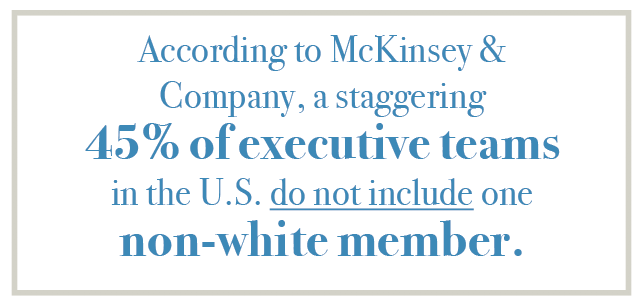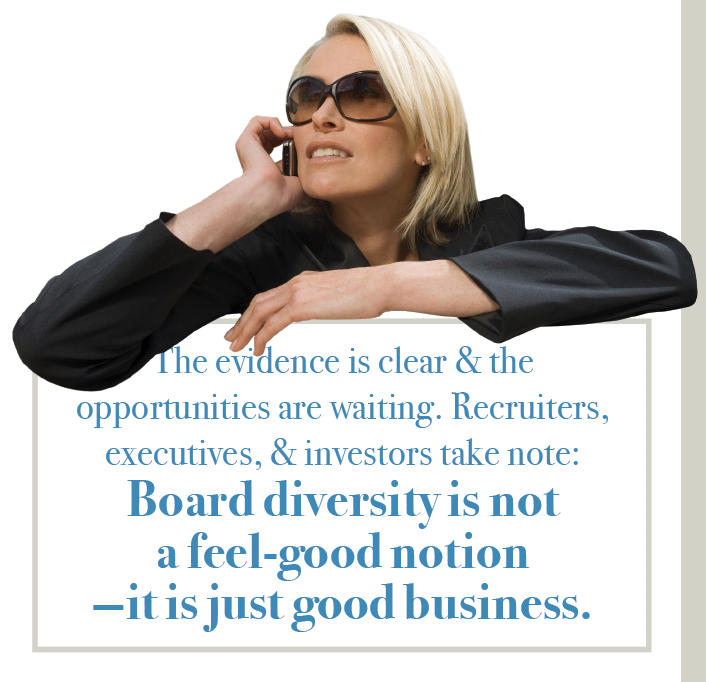The diversity of business owners strengthens our nation as their unique perspectives are woven into their businesses, communities, and local and regional economies. However, our nation’s rich diversity still is not reflected in the leadership of companies that sell us products and services and ask us to invest. What a loss.
The Status Quo
Today in the United States, women make up 51 percent of the population. We are 13 percent African American, 18 percent Latino, and six percent Asian Pacific Islander. Yet, here it is 2018, and I am only the 10th woman ever elected to statewide office in California – the most ethnically diverse and most progressive state in the nation. The lack of diversity among our elected officials is woefully apparent. However, behind the doors of board rooms and C-suites across the country, corporations are failing to integrate diversity, and decisions are made without the range of perspectives that differing backgrounds bring.
 According to McKinsey & Company, a staggering 45 percent of executive teams in the U.S. do not include one non-white member. Only about three percent of senior executive teams actually reflect the diverse make-up of our population. Fewer than one percent of Fortune 500 board directors are openly LGBT.
According to McKinsey & Company, a staggering 45 percent of executive teams in the U.S. do not include one non-white member. Only about three percent of senior executive teams actually reflect the diverse make-up of our population. Fewer than one percent of Fortune 500 board directors are openly LGBT.
Equally disturbing is the divide between the way male and female directors view diversity. A PricewaterhouseCoopers report found that 80 percent of women agreed “very much” that diversity leads to more effective boards, compared to just 40 percent of men.
The sad truth is hardly any corporate board vacancies are being filled by women or minorities. At the current rate of progress, it will take 25 years to reach a point of equality in gender representation at the senior vice president level. For the C-suite, gender parity would take 100 years. Companies that rise and fall on quarterly earnings reports cannot wait a century to attain true diversity if they hope to succeed.
Not Just for Diversity’s Sake
The rate of progress remains at a glacial pace despite growing evidence that diversity in management enhances company performance. Companies in the top quartile for gender diversity are 15 percent more likely to have financial returns above national medians. For those in the top quartile for racial and ethnic diversity, that number is 35 percent.
Women are credited with bringing enhanced collaboration to the boardroom and the management team—and with creating a safer place for innovation, opportunity, and free exchange of ideas. Diverse perspectives and skills add greatly to organizational wisdom and help engineer visionary thinking and strategies. Clearly, companies are stronger when leaders have a broad array of skills, experiences, and viewpoints.

Moving the Needle
I serve on the boards of California’s two largest pension funds, CalPERS and CalSTRS. Both are actively engaging with corporations to achieve greater diversity on boards and management in terms of skill sets, gender, age, nationality, race, sexual orientation, and gender identity. Both funds have called on the U.S. Securities and Exchange Commission to ask companies to enhance disclosure of board member nominees’ backgrounds. Improved disclosure forces businesses to become aware of their own lack of diversity—the first step to change.
The pipeline of diverse candidates for the C-suite is stymied by the lack of women and minorities at the senior management level. We know from McKinsey & Company that – at entry level – women are within 8 percent of gender parity. At the other end of the pipeline, men dominate the representation 4 to 1. The more organizations can increase the influence and visibility of top-level women and minorities, and connect them to workers early in their careers, the greater their success will be in increasing management diversity and creating inclusive work environments.
 Recruiting Qualified Women
Recruiting Qualified Women
Leaders from a wide variety of economic sectors have not been actively included in corporations’ diversity outreach and recruitment efforts, but they should be. Years of experience in business and real estate is analogous to the experiences at the C-suite or board level in private sector corporations honing strategy, management, and oversight skills.
Small business leadership entails developing long-term strategies for organizations, understanding uncertainties, and exercising sound judgment. It requires succession planning, performance oversight, and human resource management. In addition, business owners oversee procurement needs, integration of upgraded technology, and development of regulations. They make decisions on litigation or alternative strategies, manage risks, and are adept at understanding the role of government and community relations, lobbying, public relations, and communications–all attributes and experiences that make an ideal executive or board candidate.
The argument that there are not enough qualified women to fill high-level positions falls flat. The talent pool exists; it needs to be nurtured. More and more candidates are working their way through the pipeline from several career tracks. Universities are preparing the next generation of diverse entry-level professionals in business, housing, technology, government, and finance, showing the path to corporate leadership is theirs for the taking.
The evidence is clear and the opportunities are waiting. Recruiters, executives, and investors take note: Board diversity is not a feel-good notion—it is just good business.

 Login
Login

